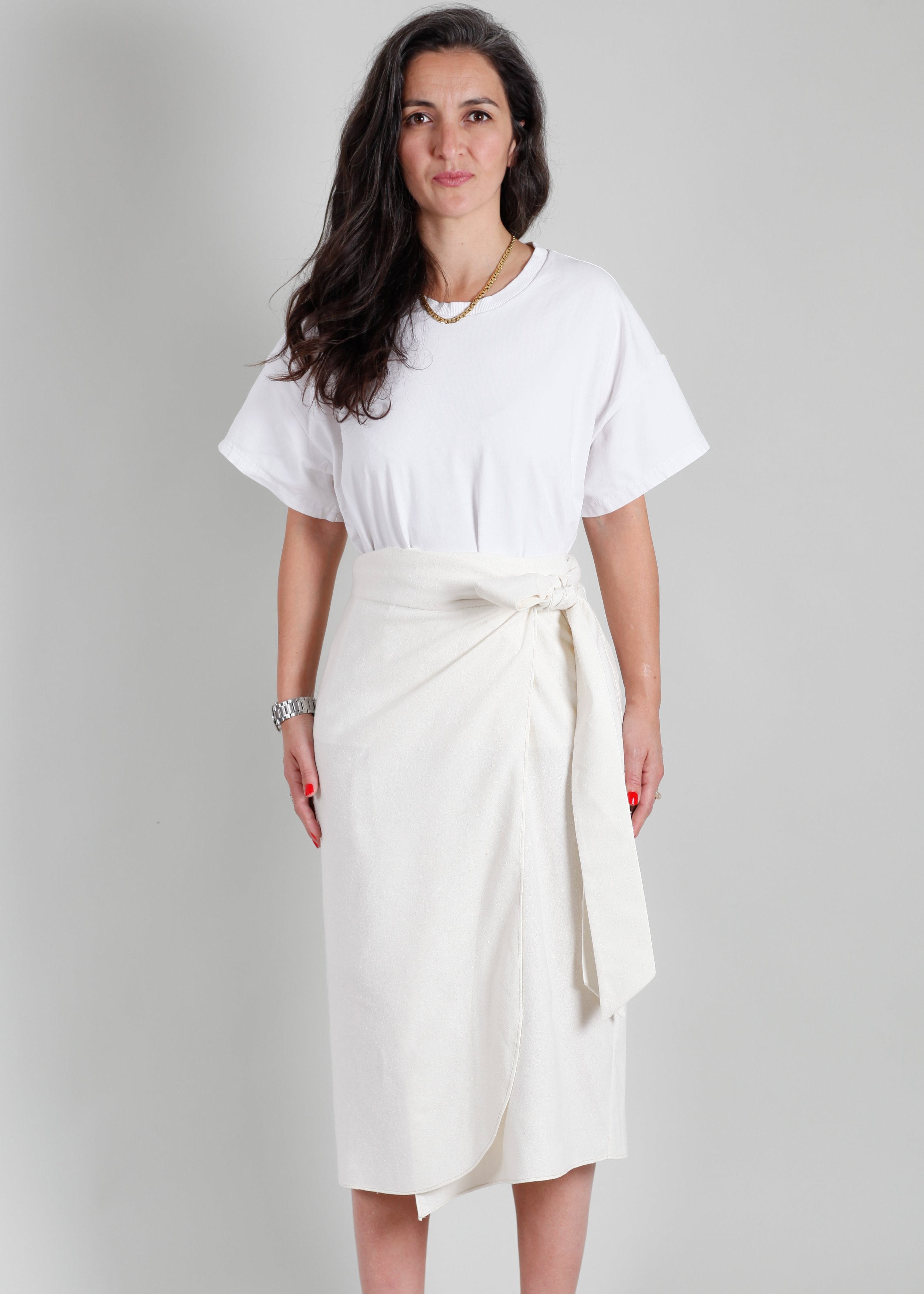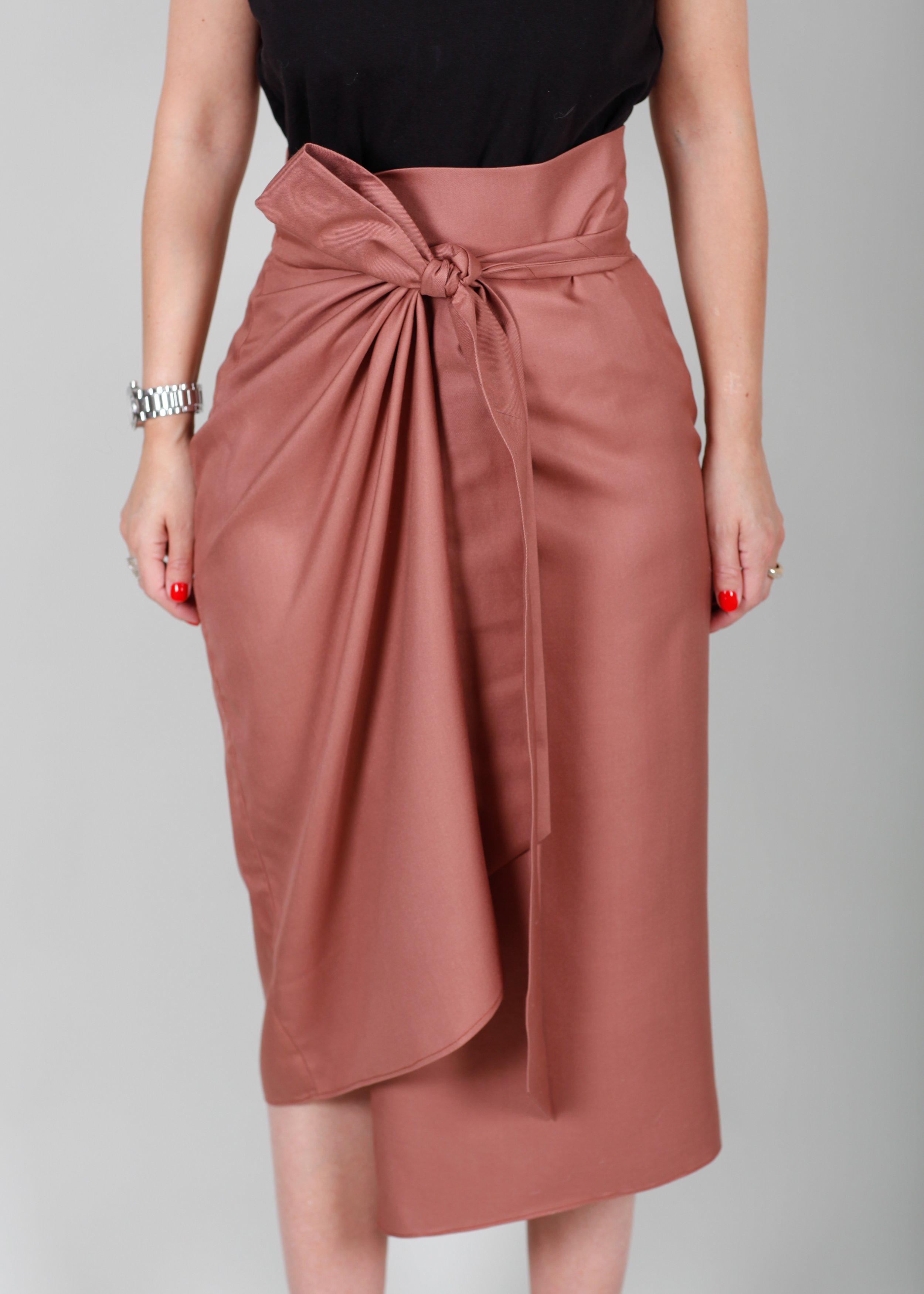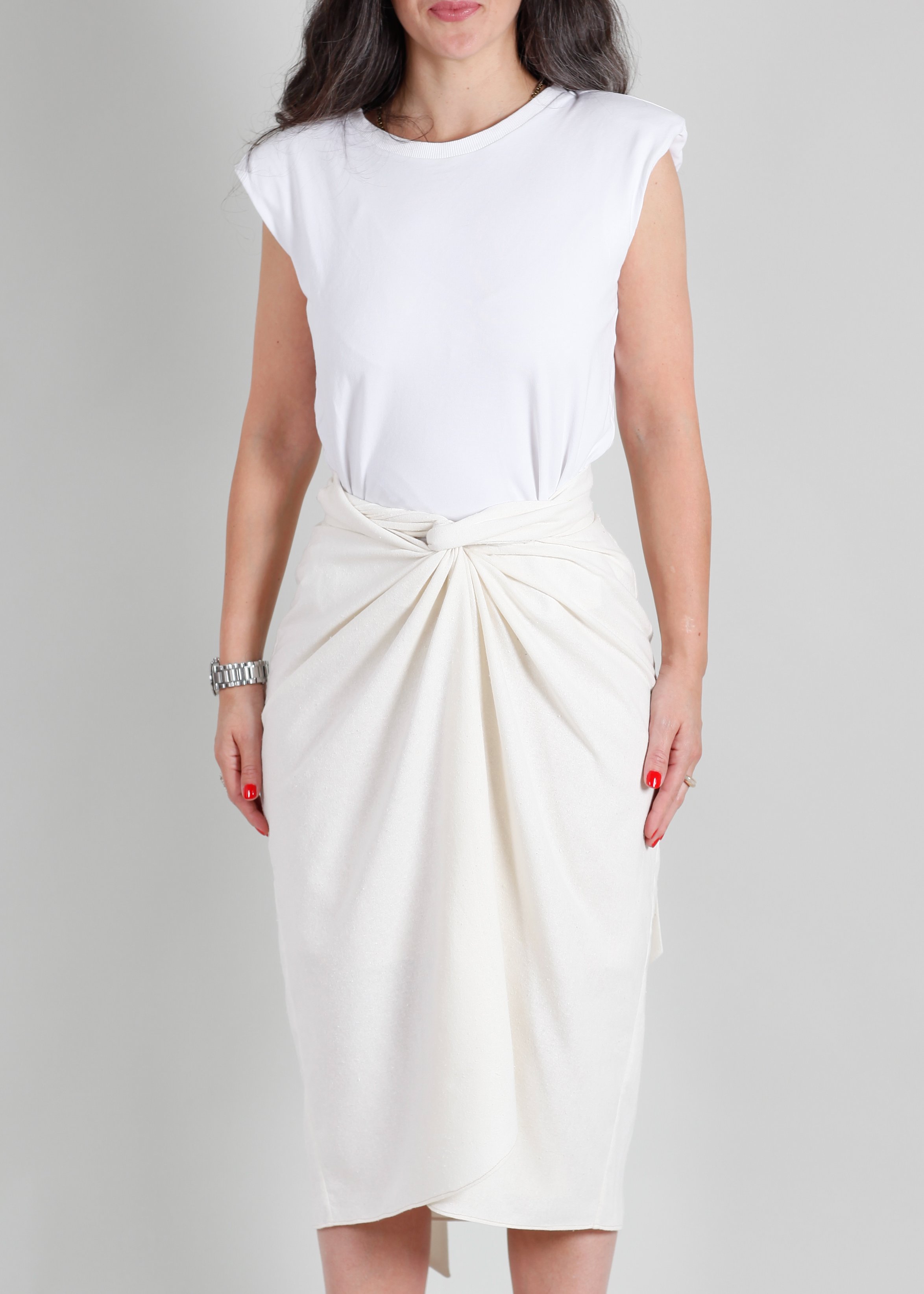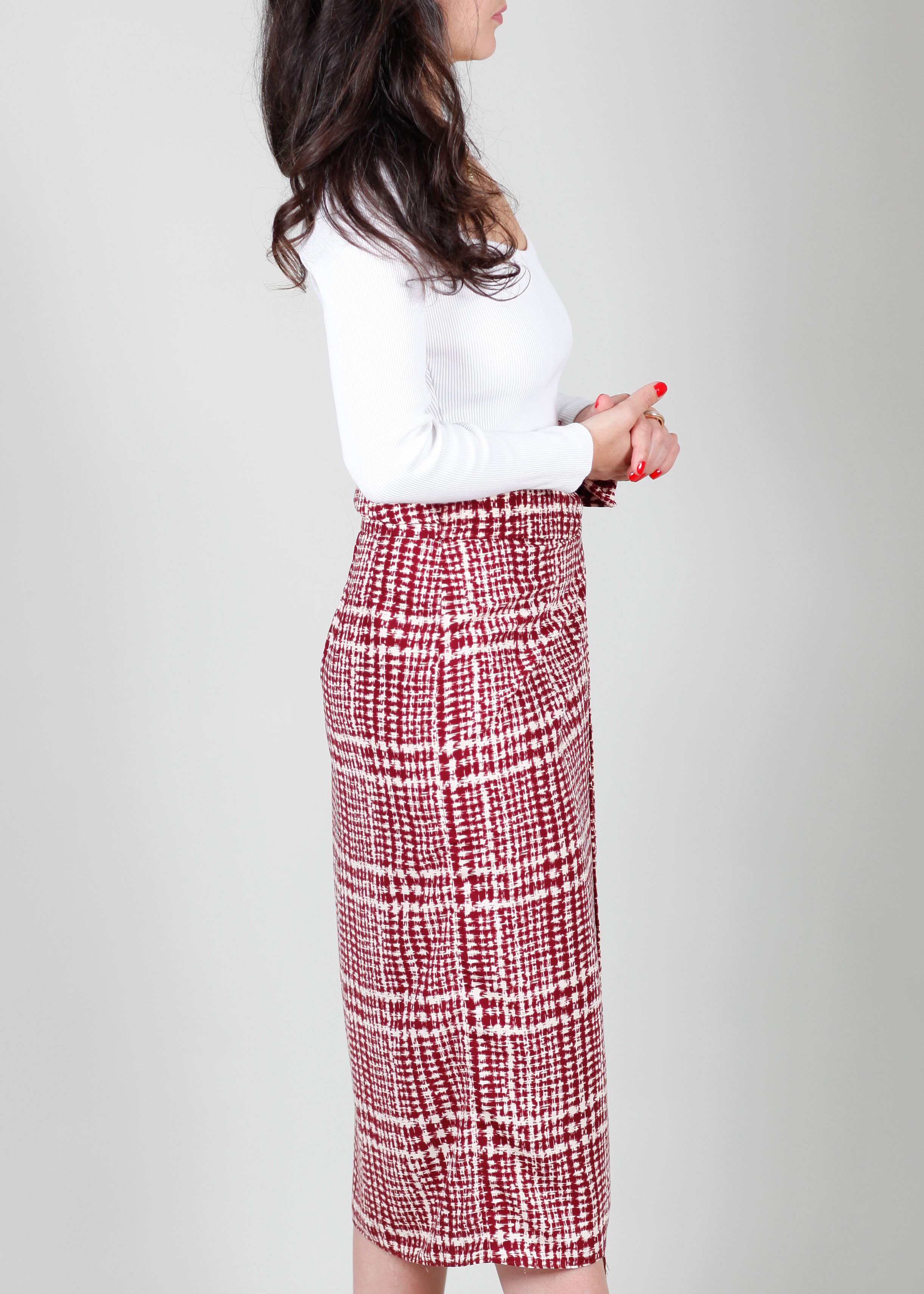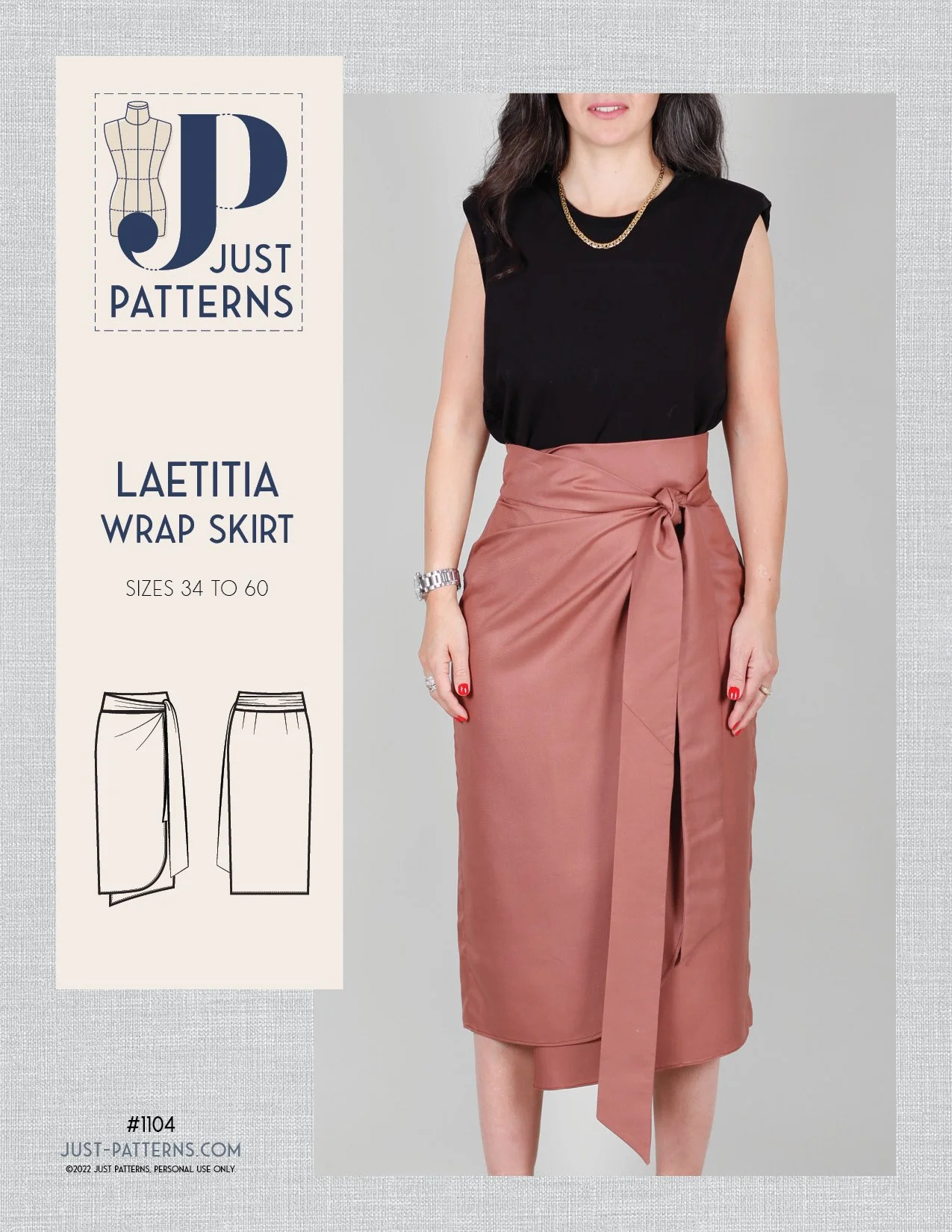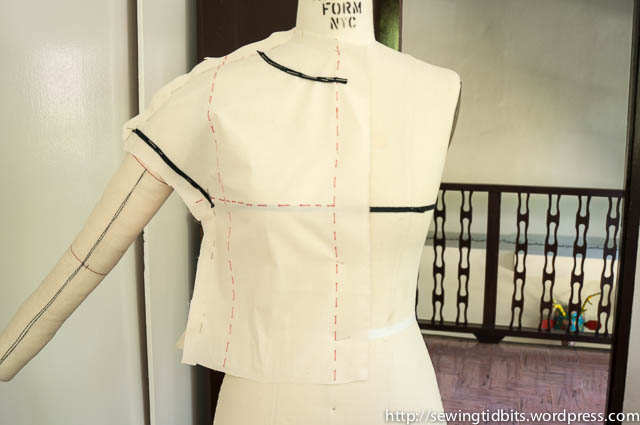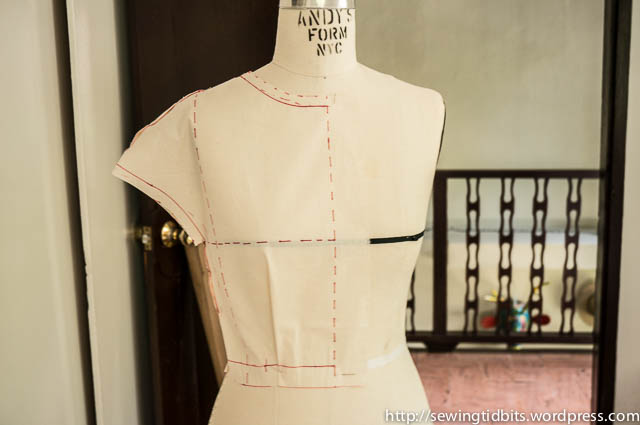Introducing the Laetitia Wrap Skirt
Delphine (Sewing Tidbits)
Dear readers,
I’m so happy to bring you a new addition to the Just Patterns family. I have not released a skirt pattern since 2020 and it definitely feels strange because skirts are my favourite things to draft! Compared to my last launch, the development of this pattern was super smooth and it was the perfect palate cleanser that I needed. Let me introduce you to the Laetitia Wrap Skirt:
Laetitia is a chic and comfortable wrap skirt with a knot at the waist. It’s detailed with a high waist and a midi-length asymmetric hem. The waistband extends into extra-long ties that can be used to tie the skirt in multiple ways depending on much drape and show of leg you want. I am trying to edit the video in which I show you the three ways I tied the skirt for the photoshoot but maybe you will also come up with your own?
You all know that I love good fit and beautiful insides so the pattern has 4 back darts, a wide waistband that extends into ties, and clean finishings with french seams and baby hems.
Samples are cut from brown silk twill, a printed poly crepe and a white silk noil. For this pattern, I recommend woven fabrics with drape, such as midweight silk crepe, noil and satin, viscose, challis, wool crepe and suiting, cotton lawn, or polyester alternatives. Depending on how the skirt is tied, the wrong side of the fabric may show but you can definitely experiment with prints and plaid.
The pattern is drafted for a height of 5'5" (1m65) and is available in two size ranges: 34-46 and 46-60. Both size ranges, including sizes 46, are drafted in the same way but separated to make the files easier to use. This pattern is easy and quick to sew, but in case you need help, I curate a list of helpful tutorials on the resource page!
The pattern includes:
Layered PDF pattern in options for each of the two size ranges (print at home for letter or A4, A0 and projector);
a Cutter’s must (a summary table of the pattern pieces and cutting information);
PDF layout;
order of operations ;
and step-by-step illustrated instructions.
As usual, the pattern features Just Patterns’ signature “order of construction” as it comes in handy for experienced sewists who like to refer quickly to steps without scrolling through pages of instructions.
Laetitia is perfect when paired with any of the Just Patterns knit tops: Claudia, Tyra and Alek and I’m happy to let you know that all three also now go from size 34 to 60. For Laetitia and all the updated patterns, I offer to grade up or down at no extra cost if your measurements are at least one full size outside of the size range. You can read more about the size range and the updated calendar for the older patterns here.
I hope you will enjoy sewing Laetitia. Don’t forget to tag #LaetitiaWrapSkirt if you post on social media!
Happy sewing!

